2017 KTM EXC Range: The Engine Guru
A fascinating window into the unorthodox development process employed by KTM’s engine design team.
Michael Viertlmayr has been the Project Leader for KTM’s 450/500cc engine family for 10 years, and is now in charge of the brand’s entire motocross and off-road engine development. He heads up a small and passionate team of engine designers who’ve notched up countless world enduro and motocross titles in the past decade, the most notable of which is undoubtedly Ryan Dungey’s 2015 AMA MX and SX titles – using the new-generation 450cc SOHC engine that has been adapted for off-road use in the 2017 450/500EXC-F.
We sat down with Viertlmayr at the model-launch in Spain and got this fascinating insight into his team’s somewhat unconventional process of development…
TM: Tell us a bit about the design process; about how your engine department works in conjunction with the chassis and bodywork design teams.
MV: For any motorcycle, the chassis and engine must be designed in a harmonious way, meaning we don’t start our design work separately and then ‘check-in’ with each other later on to integrate the designs. At the very beginning of the design process, we get together at length to establish the boundary conditions for each model – things such as the engine dimensions, where its centre of gravity will be, how it will be mounted in the frame. Of course, this must all be consistent with the overall concept of the new model.
For all your 2017 engines, there are massive changes in the position of the crank and clutch shafts to radically alter the engines’ centre of gravity. Does that process begin at the crank?
The first step in the process is to establish what the limits are; how far these rotating shafts can physically be moved. This will be limited by things such as the diameter of the crankshaft, which is defined by the engine’s stroke. The crank diameter then defines the design of the transmission, whose shafts we then move around to find the optimal package. Of course, this is all done in CAD. We then make fatigue calculations to establish whether these dimensions can last in reality. We do several ‘loops’ of this process to get to the point where we think we have a package that looks reasonable in 3D. At that point, it’s time to try the engine in reality and the first prototype is built. We then establish some test variances – things such as different engine layouts, cylinder angles and inertia, the routing of the exhaust, for example – and options for how you can move the engine around in the chassis to give you the optimum position of the crankshaft and output shaft, and so on. It’s a very complex process, so that is only a very broad explanation of how we go about it.
What are some of the ‘extremes’ you went to during the development of the 2017 engines?
It’s often more useful to take extreme steps to help establish the impact that certain changes will have. For example, we tried several very different positions for the output shaft to properly understand the impact of different relative positions of the sprocket and swingarm pivot. Obviously, this relationship has an impact on how the bike’s rear-end does or doesn’t squat. In the end, we found the optimum was close to what we had already been using in our bikes, but that process gave us a more thorough understanding of the relationship and gave us more confidence in the final design.
And the changes you made to the position of the crankshaft and clutch were massive.
Yes, there were radical changes. Moving the axis or position of these shafts by a few millimetres is a lot in engine design terms. For these 2017 engines, we have moved them up to 30mm. That is huge. Our objective was to make the triangle of the crankshaft, clutch shaft and output shaft as steep as possible. We then optimised the shifting mechanism so that it could fit under this triangle. In other words, we worked tirelessly to minimise the distance between shafts; to squeeze every millimetre out of the package to create the most compact engines possible. If you keep this modularity between the 250 and 350, and the 450 and 500, I think we are now very close to the limit of what is doable when it comes to minimising engine dimensions.
“Our objective was to make the triangle of the crankshaft, clutch shaft and output shaft as steep as possible because this creates the most compact engine and helps centralise the mass.”
The concept of centre of gravity for motorcycles is now very different to what it was two decades ago. Back then, it was all about keeping weight as low as possible. Nowadays, it’s all about moving the large rotating masses to the fulcrum point around which the moving motorcycle rotates front-to-rear and side-to-side, right?
That is true. This fulcrum, or pivot point, is behind the cylinder; somewhere just above the electric starter motor on our bikes. In a corner or in the air, you need to turn a motorcycle around this point. The closer the mass – and especially the heaviest rotating masses – is to this centre of gravity, the less resistance there is to changing direction. In other words, the less rider input required to change the bike’s direction. Because the rotating masses have the biggest influence on a motorcycle’s handling, that is why we have spent so much time ensuring that we minimise the distance the crank and clutch shafts are from this C of G. This is clearly demonstrated by our 350 and 450EXC-F – these two models have less than 1kg difference in static their weight, but they feel very different to ride because the 450’s rotating masses are inescapably larger. Okay, we could have reduced the 450cc engine’s inertia, but then that would have a negative influence on its character – the smoothness of the power delivery and its traction.
Speaking of this 450 engine, how satisfying is it for you and your team that it’s already won an AMA MX and SX title in the hands of Ryan Dungey?
That was tremendously satisfying for me, and a strong motivating force for the whole design team. We are all very proud of the achievement because it’s the best possible endorsement of our work. We are just a small team of guys, but we all ride bikes ourselves and we are hugely passionate about what we do at KTM. Some people may think that we have an unorthodox way of developing motorcycles because many of our best ideas come while we are having a beer together after work or at a barbeque on the weekend. But it definitely works.
So the 2016 MX models have laid the foundation for these 2017 enduro bikes. But you guys did much more than fitting these engines with a six-speed transmission and dropping them into an enduro chassis, right?
Absolutely. A lot more! It is not a given that an engine which works for MX and SX will automatically translate into a good enduro engine. Remember though that, as project leader for the 450/500cc engine family for 10 years now, I had a good idea of what we would need to do to ensure this engine would work for off-road applications. Plus, there are several other similarly experienced people in my team. So we already had a lot of ideas about how we could optimise the new-generation enduro engines, while retaining a certain modularity between the models to ensure we optimised the way they integrated with the chassis design.
Tell us a bit about developing the traction control technology.
We first tested it three years ago, and we were initially very sceptical about it. We were also unsure of how off-road guys would embrace the idea of more electronics. But after the first two times we tested it, we changed our attitude. Not only did it immediately prove to work very effectively, it was also a very simple system as you don’t need any additional wheel or gyroscopic sensors. In basic terms, the ECU is able to determine when, for a given throttle setting, the rear wheel is spinning up too fast. In those instances, it simply retards the power. And we were able to adapt it to each specific gear. The feedback we received here at the launch was overwhelmingly positive, even though the conditions in Spain didn’t fully show what the system was capable of. In terrain where you have only small patches of traction in between loose rocks or slippery mud, the full potential of the traction control would be even more evident.
“When we first tested traction control three years ago, we were very sceptical. But it immediately proved effective, and it’s a very simple system as you don’t need any additional wheel or gyroscopic sensors.”
Traction control aside, what kind of feedback did you get about all the new-generation engines?
It was so positive. At these launches, where we have about 60 journalists from all around the world testing the bikes, it’s always interesting to see how everyone has their favourite model; their ‘pet’ bike. Guys who ride for fun tend to gravitate to the two-strokes. The 350EXC-F is always a favourite for many because it’s just such a good all-rounder. But we found that the faster guys from the Scandinavian countries and you guys from Australia really liked the new 450.
We’ve talked a lot about the four-stroke engines here, but it’s the completely new 250 and 300cc two-stroke engines that almost stole the show. Did you develop those engines around the central idea that they needed a counter-balancer?
The base concept of the previous two-stroke engine was from the early 1990s, and that had been refined about as much as was possible in the 25 years since. So it was important that we build a completely new engine. Our primary goal with the new engine was to reduce vibration. Vibration had become an issue for us because consumers were complaining that it was excessive, and because it was affecting the performance and reliability of some parts – the shock absorber, in particular. So we figured out how to configure the engine to introduce the electric starter in a proper way – into the underside of the engine cases, as it should be – and to incorporate the balancer shaft in a way that didn’t require any change to the shape of the cases and compromise how compact the engine package otherwise is.
Why hasn’t a counter-balancer been fitted in the past?
A few reasons: it adds friction and therefore robs the engine of some power; it’s expensive; and it’s not easy to integrate it without making the entire engine bigger. And these are the issues that manufacturers look to avoid. For us, though, we believed the compromises were more than worth it. And after the very first test with this new engine, we became convinced it was the right solution. We tried different arrangements of shafts, and we tried both a lateral and a central counter-balancer, which is what we ended up going with. In addition to improving rider comfort, reducing vibration by so much also improved the action of the shock absorber and eliminated the reliability problems we’d had with past models, such as the shock bushings. Many journalists used the word ‘refined’ when they gave us feedback about the 250 and 300EXC engines, and that’s a term not often used for two-strokes.
RELATED ARTICLES…
- Click here for candid insights into the new technology integrated into KTM’s 2017 enduro range from the brand’s main R&D man, Bernhard Plazotta.
- Click here for an interview with KTM product development guru, Joachim Sauer. It’s a candid insight into the design philosophy of these new-generation EXC models, and what’s coming from KTM in the near future.
- Click here for our ride impression of KTM’s 2017 EXC range from the international launch in Spain.
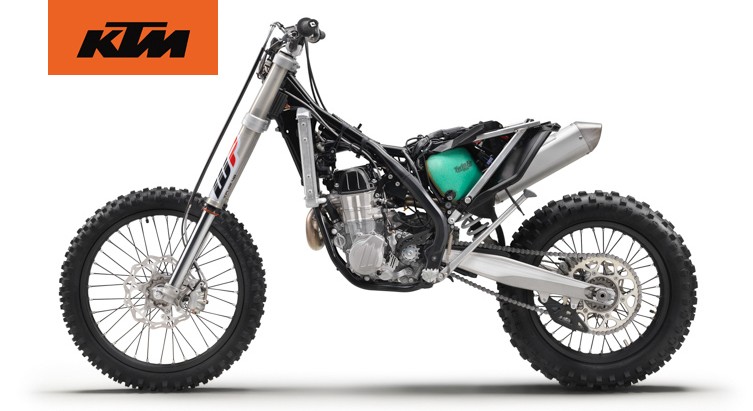
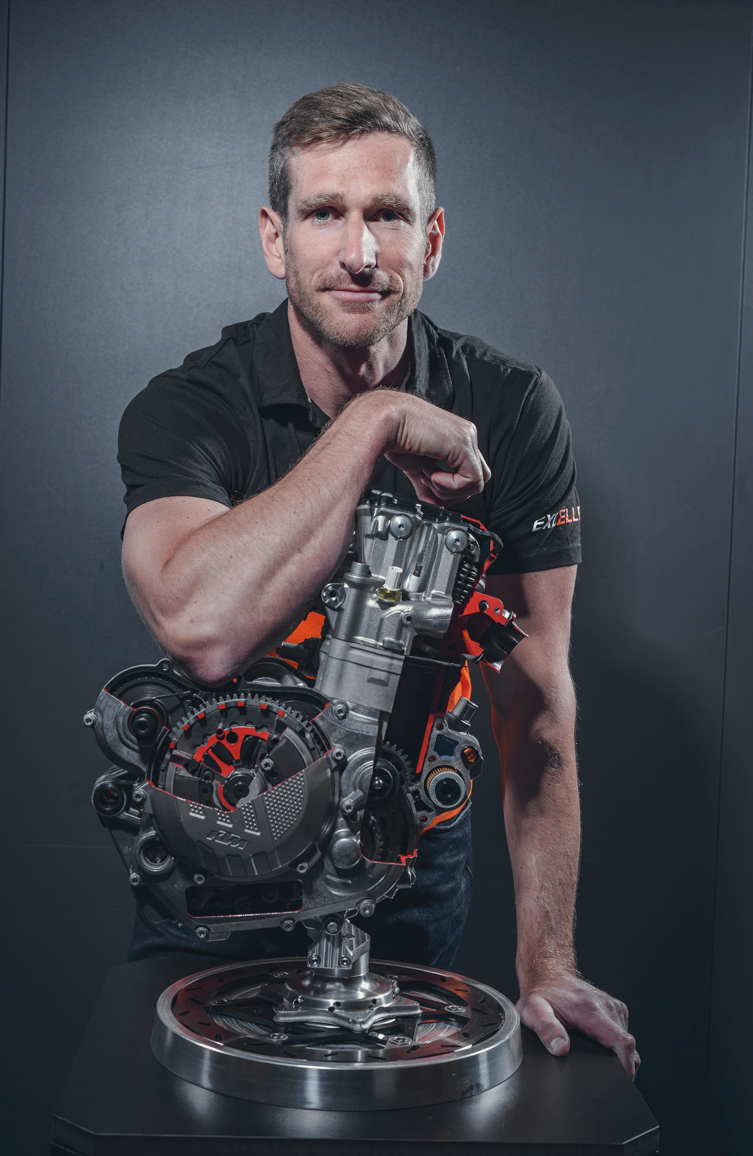
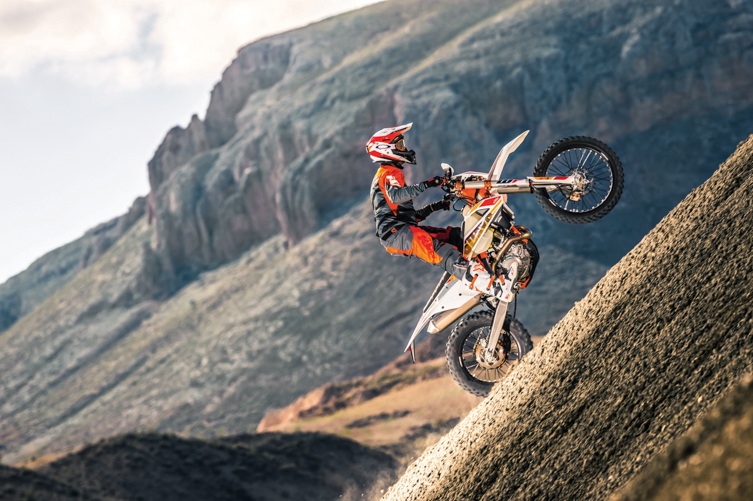
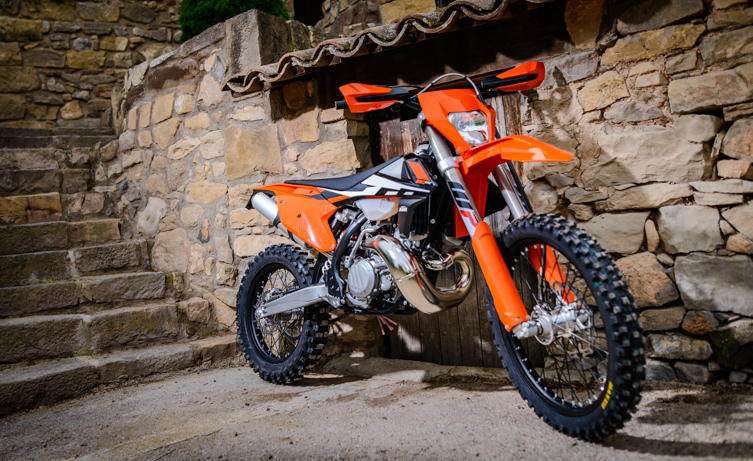
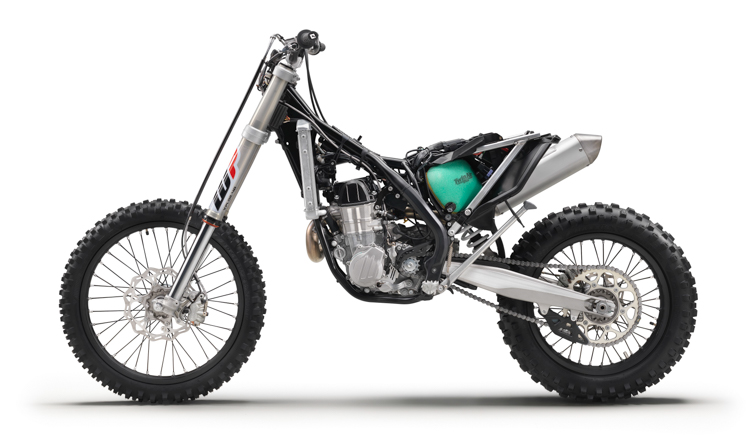
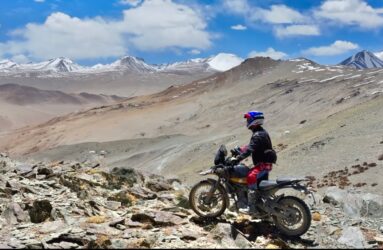
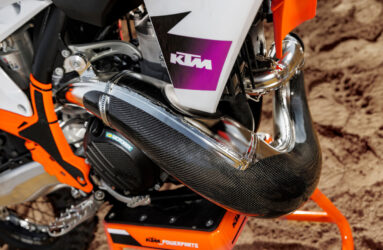

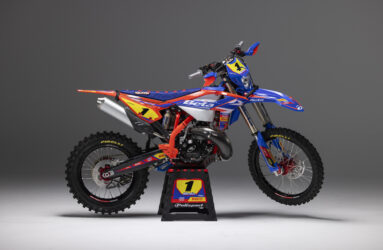
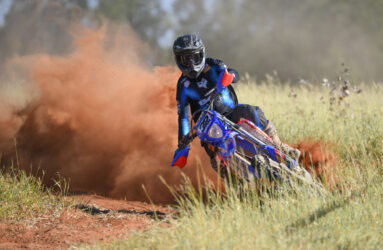
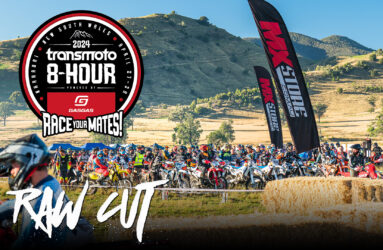


Be the first to comment...